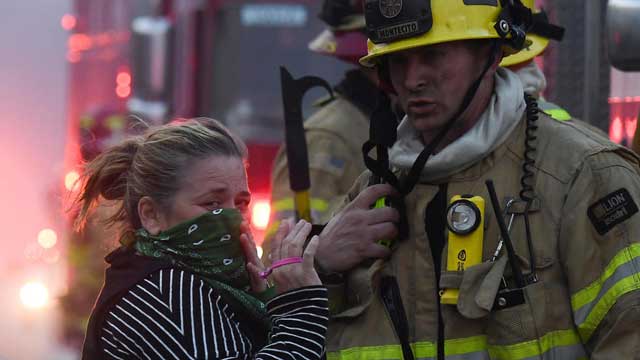
Pandemic throws up additional challenges for US firefighters
Baca Juga

Los Angeles, United States | AFP | The wildfire season in the western United States is shaping up to be even more challenging this year because of the coronavirus pandemic, which has forced firefighters to rethink how they respond to disaster while also protecting themselves.
“We’re focused on COVID-19, we’re focused on coronavirus mitigation, trying to do our best to suppress the spread while at the same time we’ve got to mitigate and suppress these fires as we move into wildfire season,” California’s Governor Gavin Newsom said last week as he promised increased funding for firefighting.
Newsom said California has had a 60 percent increase so far this year in wildfires compared to the same period last year because of drier weather.
“We are mindful of the unavoidable anxiety that this time of year presents to people,” said Newsom, referring to the wildfire season in the state and across the West that is starting earlier and ending later each year.
“We have been prepping for this upcoming wildfire season — and we are not stepping back our efforts.”
The November 2018 Camp Fire in northern California was the deadliest and most destructive in the state’s history, leaving 86 people dead and all but wiping off the map the small town of Paradise.
The onset of the COVID-19 pandemic has added to the anxiety this year and forced the state to update evacuation plans and study how to set up base camps during wildfires.
“The camps are the size of a small village or a small community,” Kerry Greene, an emergency management specialist and spokeswoman for the National Interagency Fire Center, told AFP.
“They can have up to and over 1,000 firefighters and support personnel in one camp and all the things that you need to support them — cafeteria, showers, sleeping areas, supply areas,” she said. “There’s a lot of people moving in and out of the camp including trash pick-up crews.”
And today, such camps would provide ideal conditions for the spread of the virus.
So firefighters across the United States have been studying how best to address the fire season while taking into account the new health concerns.
“The sight of a large fire camp will not be the norm any longer,” Greene said. “Most fire suppression efforts will be in small groups and dispersed into isolated camps or other means to provide social distancing for firefighters and the public to prevent COVID-19 spread.”
She said some of the planning envisions having crews stick with the same firefighters all season to protect them and limit the spread of the virus.
– ‘Unusual burden on firefighters’ –
“This is the same concept families have used to limit exposure to the COVID-19 virus,” she said. “We are encouraging our crews to manage themselves more like families than individuals.”
Firefighting tactics are also being reevaluated, with crews adopting old-school techniques that call for an aggressive approach to fighting wildfires to ensure firefighters’ safety.
“We will be putting all the fires out as quickly as we possibly can,” said CalFire chief Thom Porter. “That initial attack is the key component to keeping fires small, and keeping firefighters healthy.”
State officials are also examining how to handle large evacuations in the event of major fires.
“We’re looking at evacuation centers being segregated, maybe COVID versus non-COVID,” said Mark Ghilarducci, director of the California governor’s Office of Emergency Services.
“We’re looking at possibly using the hotels solution, where we have the opportunity to put evacuees in single rooms, versus congregating in a large, sort of like a dormitory or a school gymnasium which we typically use,” he added.
All of these new recommendations may look good on paper, but they will be hard to implement across the board, experts say.
“It is damn tough to take these practices to the fireline,” Shawn Faiella, superintendent of a firefighting crew in the state of Montana, said recently. “I know it’s currently not business as usual, but we are putting an unusual burden on our firefighting resources before we ever arrive on an incident.”
Officials acknowledge the difficulty ahead as the fire season gets into full swing and say crews will have to adapt as they go along.
“While fire crews will do their best to follow (health) guidelines, in some cases, fire personnel will not be able to safely suppress wildfires and follow some of these guidelines, such as social distancing.”
The post Pandemic throws up additional challenges for US firefighters appeared first on The Independent Uganda:.

0 Response to "Pandemic throws up additional challenges for US firefighters"
Post a Comment